A Blast from the Past
Remington’s Model 700BDL Stays the Course
other By: Stan Trzoniec | May, 25
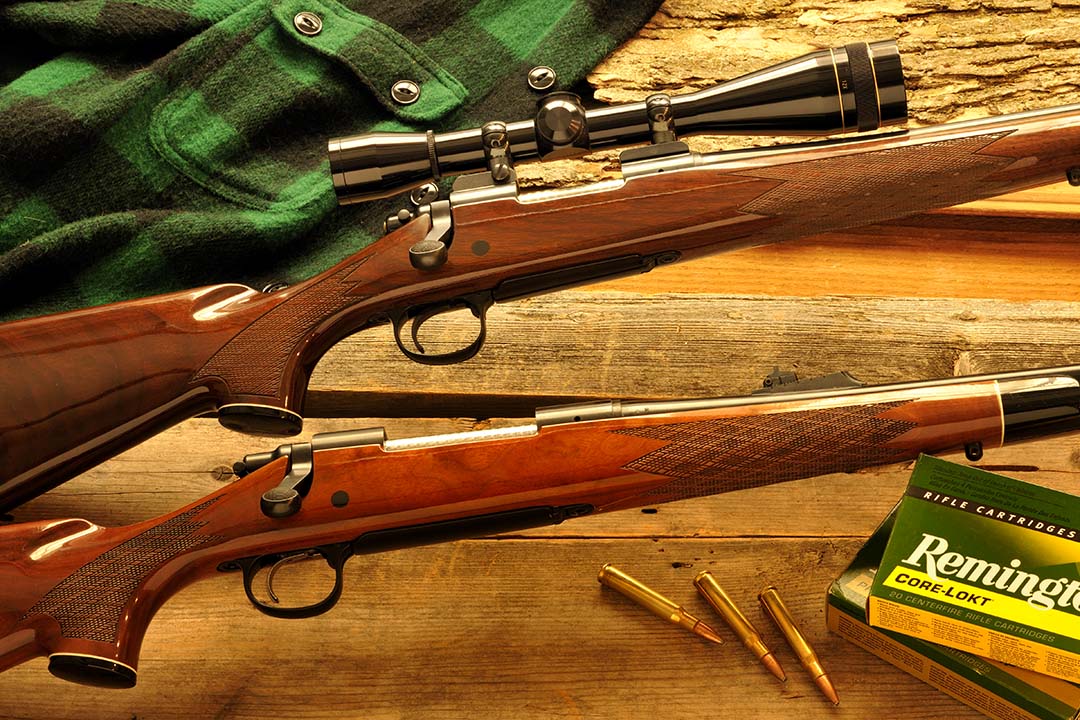
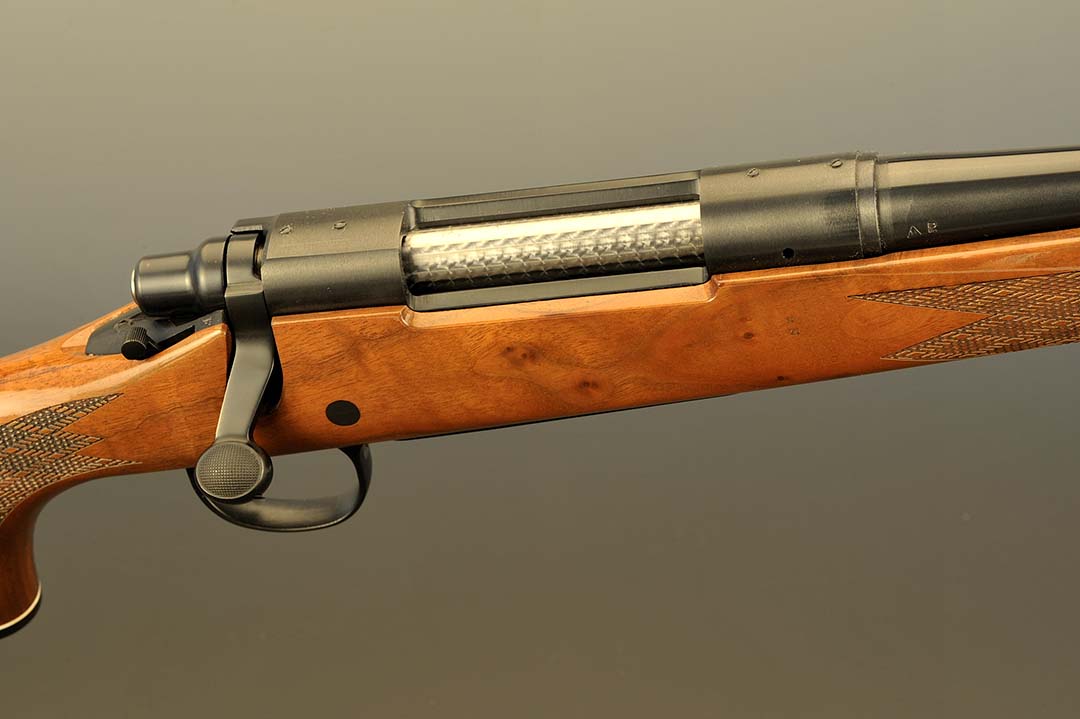
After this came the Model 720, not a big hit, but nevertheless, it is part of the history of the rifle at Remington. In 1948, models 721, 722 and 725 would appear as a totally new design, complete with twin opposing locking lugs and a bolt handle that would lock down into the receiver recess. With the war years looming, it was not until 1962 that a brand new design in the form of what Remington called the Model 700 appeared on the gun racks at local dealers nationwide.
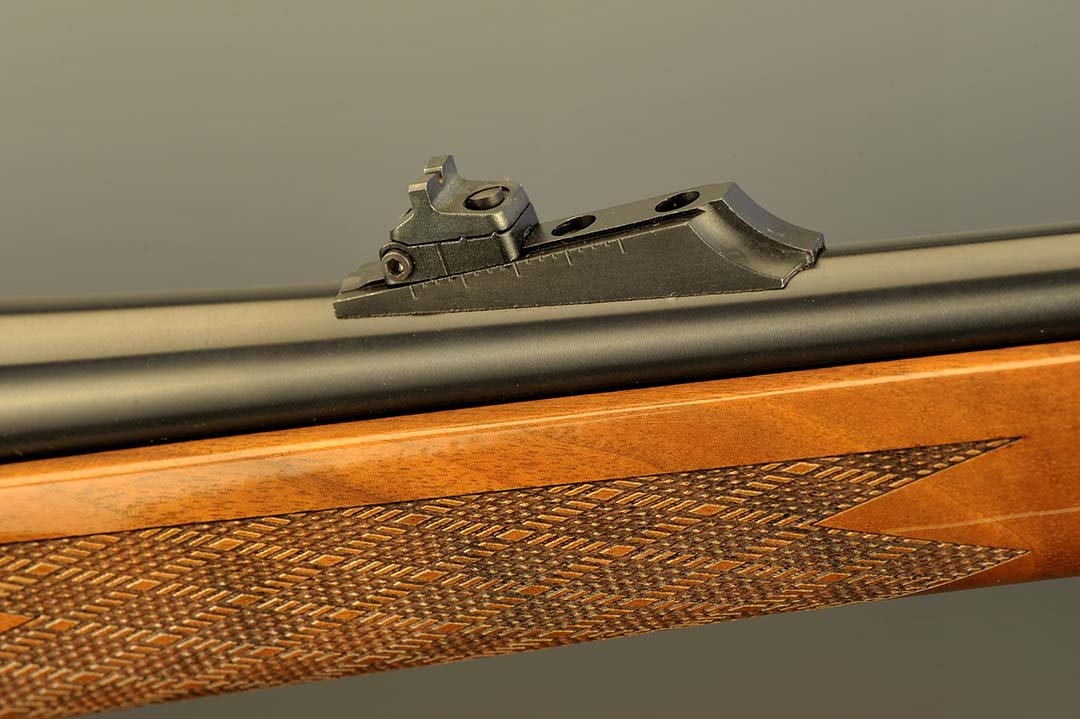
From a press release I have that is dated January 10, 1962, it reads in part, “The World’s Strongest Bolt Action Center Fire Rifles in Eleven Popular Calibers – Model 700 ADL and 700 BDL.” This three-page introduction was signed by Gail Evans who was the director of sales for Arms, Ammunition, Traps and Targets, which was mailed to all the Remington wholesalers and it detailed all the new and updated features of this new rifle. The list included calibers, stocks complete with custom white line spacers and fleur-de-lis impressed checkering (with the diamonds pointing inward, not outward as is the case with cut checkering) with due dates when each model and caliber would be available. Attached were more pages showing photos of the guns with all the additional facts spelled out in great detail, including the notation stating, “These bolt action center fire rifles will add to the enjoyment of shooters and hunters everywhere.”
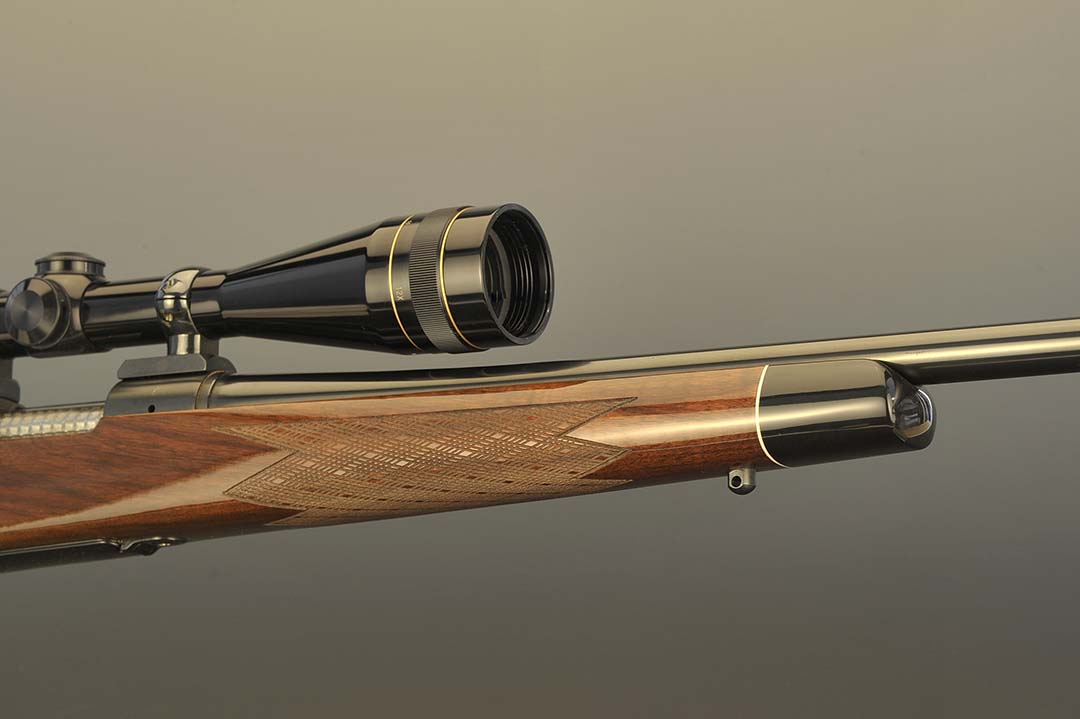
That was in 1962 and in looking at catalog sheets from this point forward to about 1980 when hunting, cartridges and even reloading ammunition was starting make real inroads in the sport, the Model 700 BDL really took off! Cost wise, in the introduction year, the price for a standard magnum cartridge BDL was listed at $139.95/$154.95 or $310 for the big-bore guns. The next year, while prices did stay the same, I noted that this was the first year the Peerless grade ($600) and the higher Premier grade ($1,200) was available. In 1970, the retail went to $159.95/$174.95, while within the next decade in 1980, the sportsman was looking at $357.95/$372.95 while today (2021), a potential buyer is looking at $1,029.
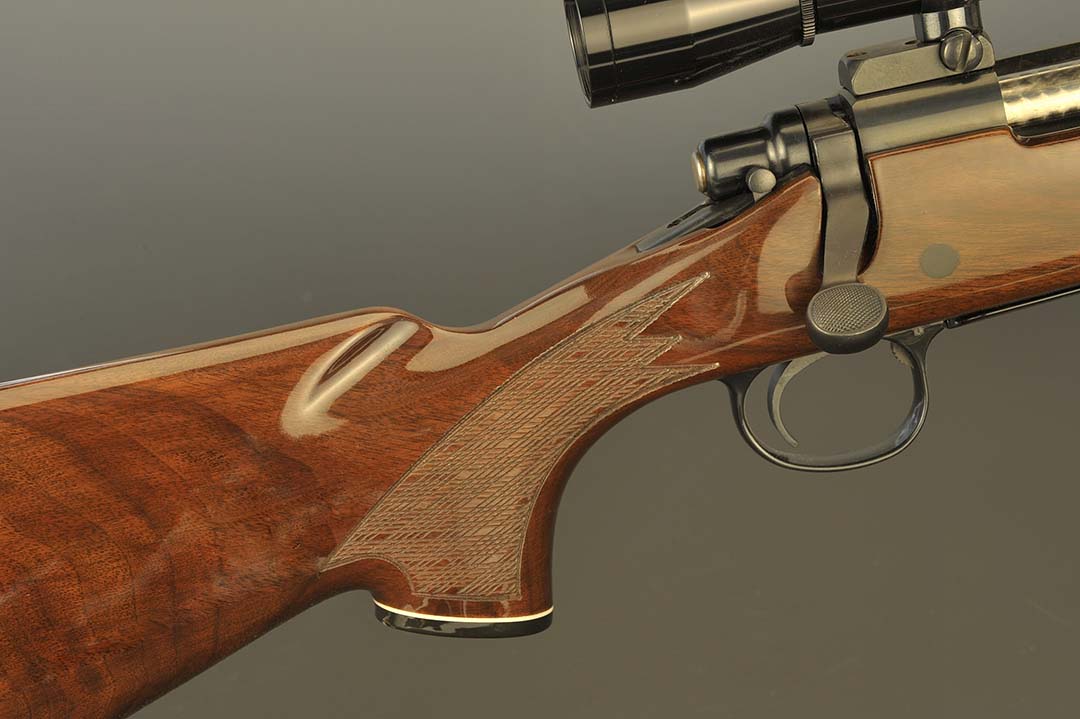
Digging deeper, we find some other interesting additions to the BDL line of rifles. For example, the 6mm Remington was added in 1963 complete with a 20-inch barrel, the .22/250 Remington in 1965 and my favorite, the Model 700 BDL Varmint Special with a 24-inch heavy barrel in 1967. The .280 Remington was added in 1968, the 6.5 Magnum in 1969, and the .17 Remington in 1971. In 1974, the checkering pattern went from the impressed ribbon like affair to genuine 20 lines per inch on the BDL’s. The 7mm-08 was introduced in 1980 with the Varmint Special first, then with the BDL rifle the following year. Unbelievably, the now popular .223 Remington was added to the BDL rifle in 1985 while the 6mm Remington and the 8mm Remington Magnum was deleted in 1984. Left-hand models and a few with a detachable magazine followed through the years. The list goes on and on, but briefly, with more than 50 chamberings to its credit, this is what was going on behind the walls in Ilion, New York, during some of the “golden” years of shooting with the famed BDL model.
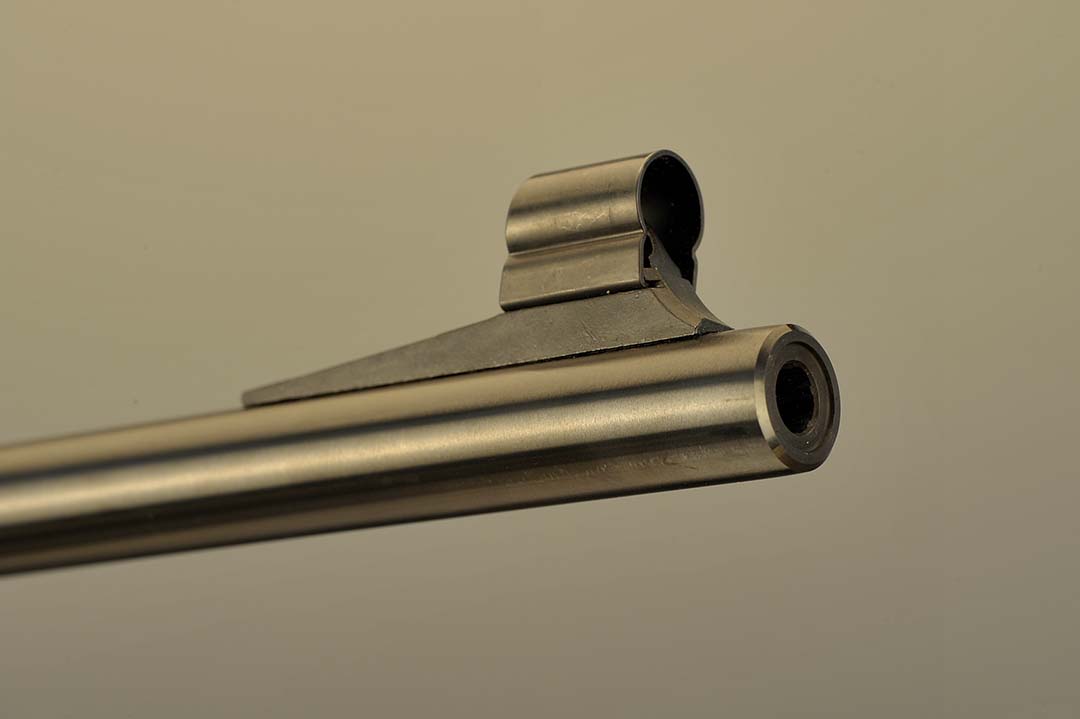
While the stock does not follow the “classic” school of thought, the CDL model comes close to that, and I’m probably in the minority, but I still like this type of stock with all the trimmings. At the muzzle end, you still can have black (but not ebony) forend tip complete with a white line spacer. Moving back, the forearm is just right for holding the gun at this point with the left-hand and has more than an ample supply of 20 lines per inch fancy skip-line checkering in a point pattern that circles this part of the gun.
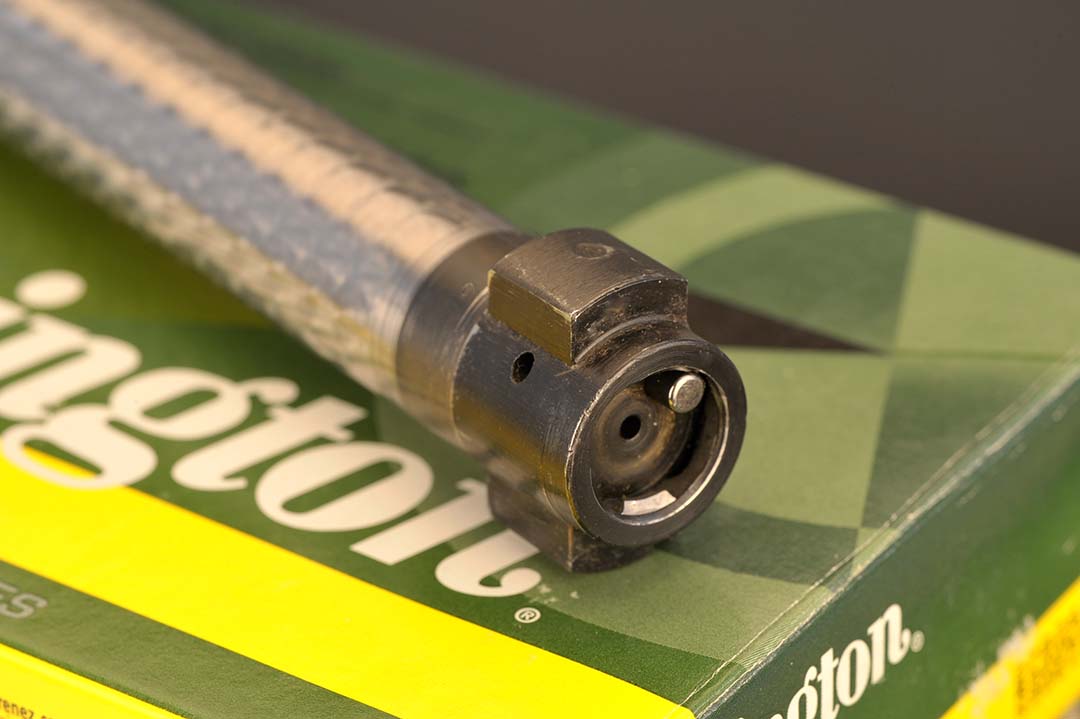
Here, the stock widens out to house the magazine well, bottom metal and trigger assembly. Believe it or not, the trigger on this gun is consumer adjustable and out of the box, broke at just under 5 pounds. If I were to keep this gun, and following the practice I’ve had with other Remington’s, the adjustment screw is at the top of the trigger itself and to do a good job of setting the poundage, take the action out of the stock. Not doing this will result in some mild frustration, as it is hard to bend the Allen wrench to fit into this space. Of course, the other alternative is to find a wrench with a small end, which then makes the job easier. Nice to note that Remington, like others in the ilk, are now using Allen head screws to secure the action to the stock.
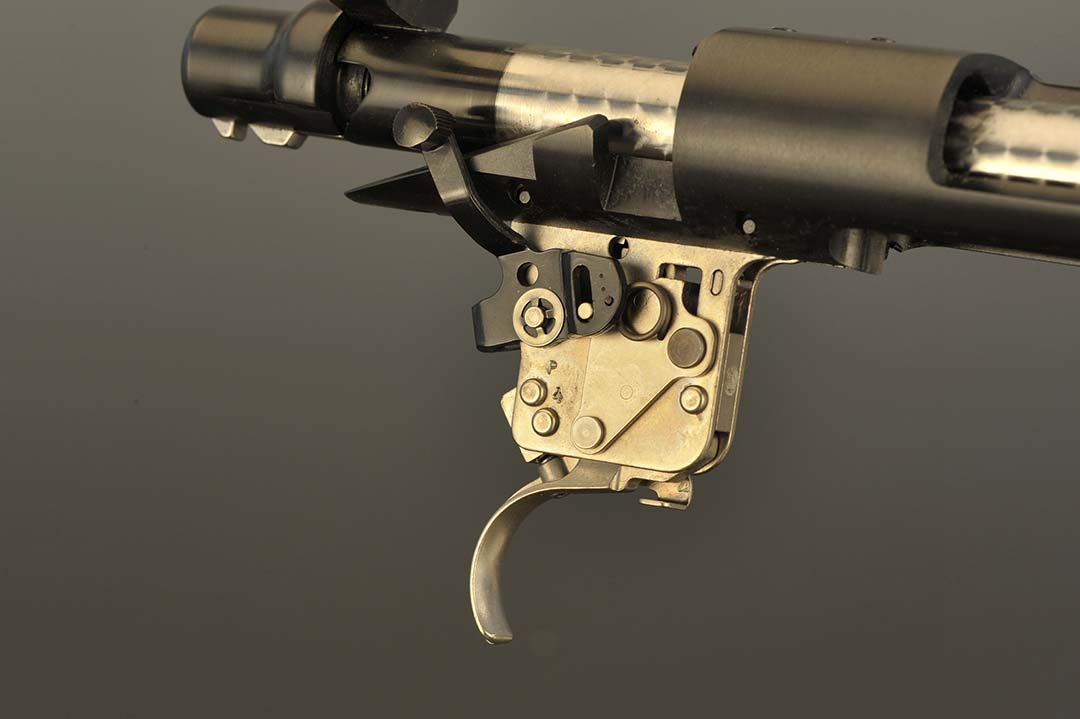
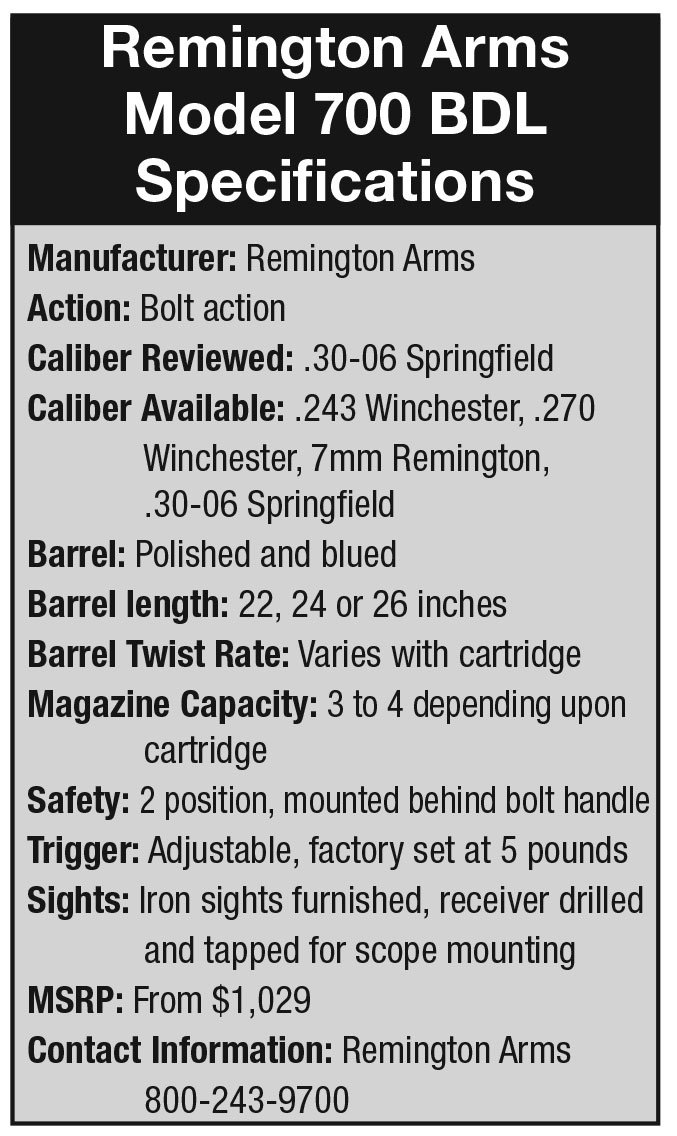
While not as highly polished as in years gone by, nevertheless, the metal on the barrel, receiver and bolt all showed they got extra attention before assembly. The barrel on my .30-06 sample is 24 inches long and tapered to a sporting diameter of .660 inch at the muzzle finished off with a target crown. There is a ramped front sight with a hood and gold bead. Near the receiver, an adjustable sight for windage and elevation has been installed; both of which are removable for scope mounting.
The short or long action receiver is machined from pre-cut round chrome-moly bars, faced-off on precision machinery, drilled and tapped for scope bases. As typical Remington fashion, the recoil lug is a separate part of the assembly and is positioned between the receiver and barrel, which will be supported and secured with twin stock screws forward and aft of the magazine well. The bolt is a twin-lug locking design with the extractor and ejector located in the bolt face. There is a guide rail machined into the right lug to enhance feeding and extraction with the bolt release located within the trigger guard, forward of the trigger. The bolt body is one diameter from the lugs rearward and jeweled for appearance. The bolt handle sits into a recess within the receiver and the bolt knob is checkered for nonslip operation. The safety is behind the bolt handle, is two position and allows the shooter to change or replace rounds while still operating the bolt. Magazine capacity is from 3 to 5 rounds depending upon the cartridge the gun is chambered for.
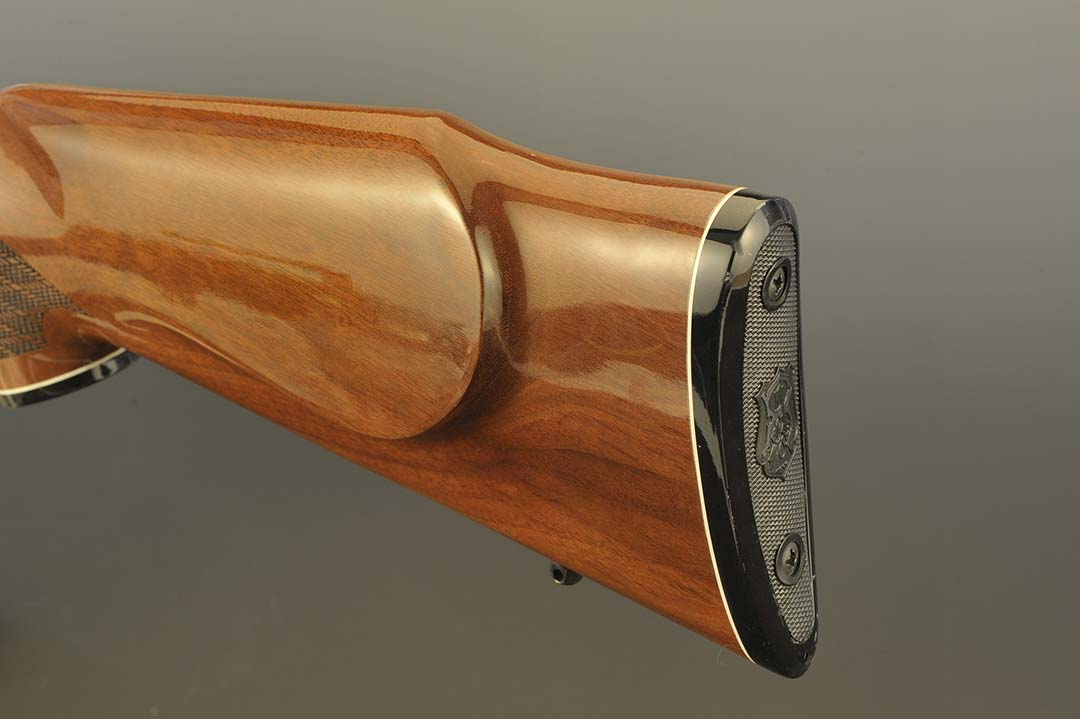
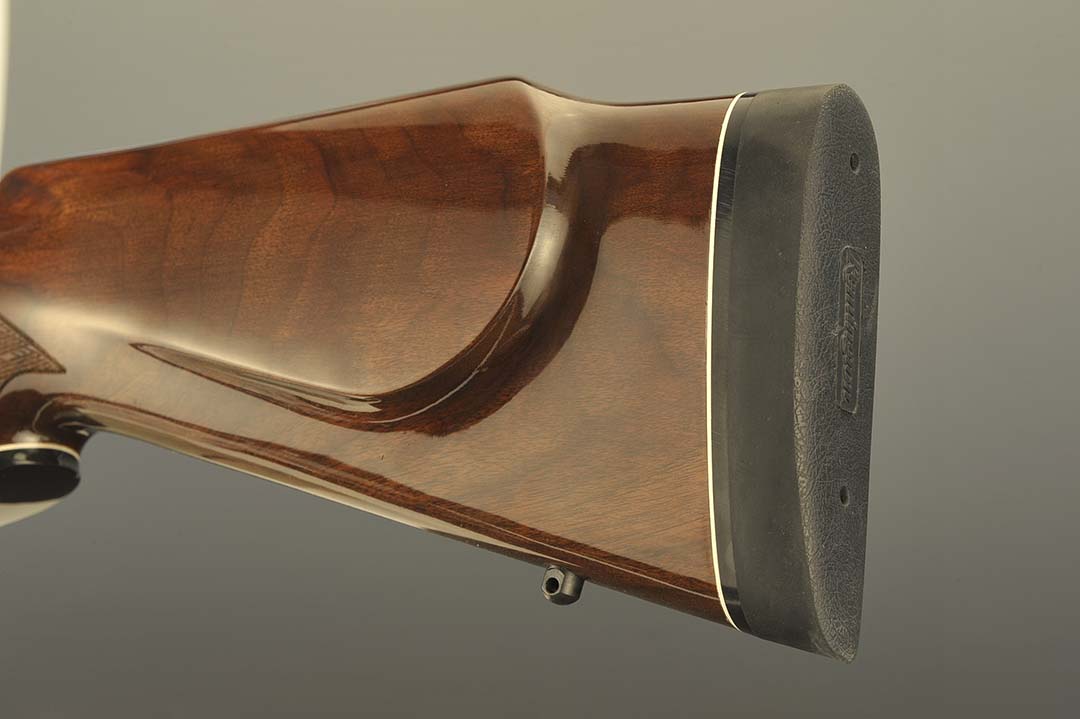
With millions of this Model 700 out in the field, you just know many of them will end up in the used section of gun and sporting stores ready for a makeover. This leads to the other side of the BDL story and is for those ready to grab a used rifle, polish and reblue the action and add a new stock. Stocky’s is a good place to find a ready-made Remington stock in a variety of styles complete with a bedding block, inletted and finished for a Remington action, and still another for those who like to delve into stock oil and sandpaper is Micro Fit stocks. They, along with Boyd’s, offer a wide range of exotic and traditional types of stocks both semi-finished and finished to suit all those with even very discriminating tastes.
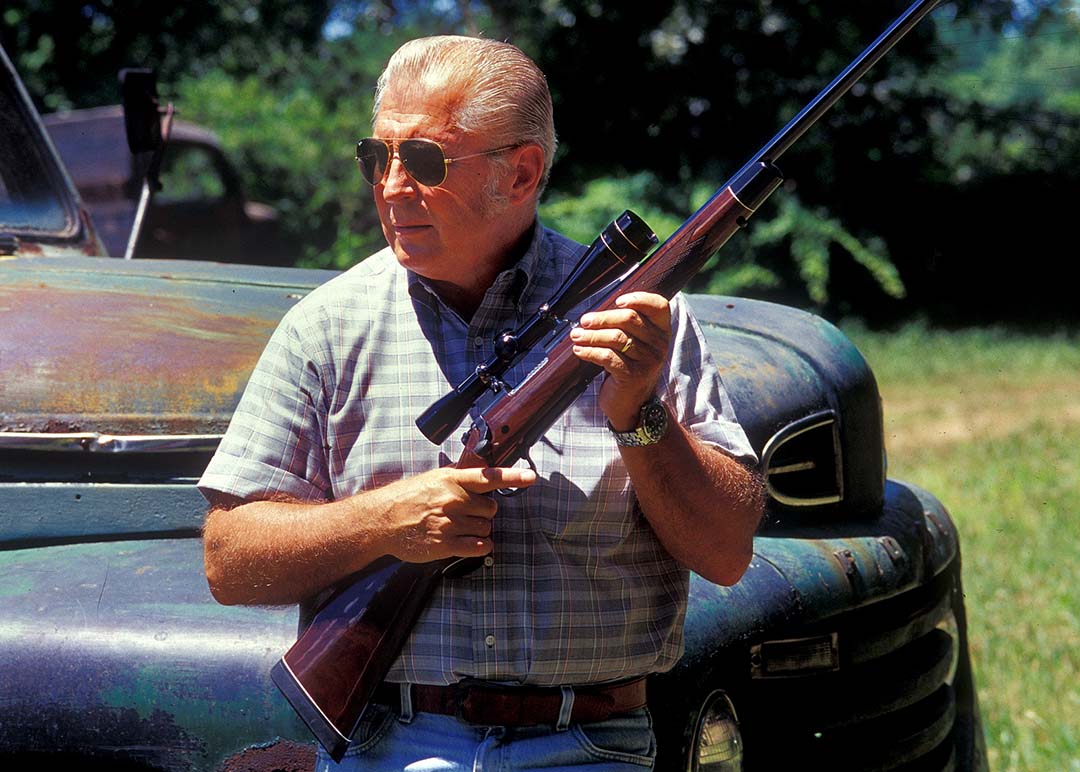
After all these years, Remington’s Model 700 BDL rifle is still very much in demand. Fine accuracy, good looks and its ability to perform in all conditions put this gun at the top of the list for the knowledgeable sportsman. As they say, “Try it, you might like it.”

